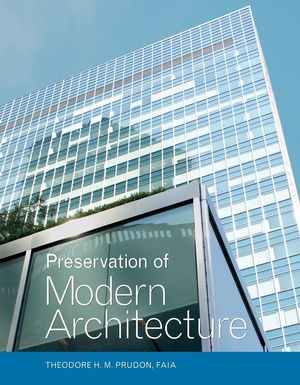Preservation of Modern ArchitectureISBN: 978-0-471-66294-5
Hardcover
976 pages
May 2008
 |
||||||
"…is the first that addresses the spectrum of issues associated with the stewardship of modern architecture, presents significant manifestations of modernism and frames the philosophical, assessment and conservation challenges of this body of the built environment. (AIA.org, February 2009)
"Overall, Preservation of Modern Architecture looks to be a legitimate source to bolster one’s knowledge or gain foundational information about modern architecture." (chicagoarchitecturetoday.com, January 2009)
"Throughout, Preservation of Modern Architecture is illustrated extensively with excellent black and white photographs, many of them historic in nature, and excellent plans of each of the case buildings. This book is essential not only for all organizations, practices and educational institutions involved in the practice and education of conservation but also is an extremely useful adjunct to every school of architecture in the world….deserves the very widest of readership for those wishing to understand and value the development of Modern Architecture in the world." (Architectural Science Review, December 2008)
"It is a comprehensive volume that endeavors to address every conceivable aspect of its topic. This book begins the necessary and potentially very exciting discussion on the future of the historic preservation movement in the United States and around the world. Take the time to read Preservation of Modern Architecture." (Traditional Building, October 2008)
Winner of the Association for Preservation Technology International 2008 Lee Nelson Book Award
Oh, the irony. Trend-setting modernist architectural statements
of the 20th century, once said to transcend style and region, now
require historic preservation. Often functionally obsolete, these
structures, in many cases, have suffered neglect, major
alterations, or demolition. Convincing owners and governments to
protect modernist buildings is a tough sell, unless they are
clearly iconic. Architect and Columbia University professor of
preservation Prudon explains the situation fully. He includes a
section on the materials and methods of the 20th century and the
preservation issues of each. The book's second part consists of
case studies of a variety of building types. Anyone who has read
architecture history will be interested in the way some significant
20th-century buildings have been preserved, rehabilitated, or
restored—often at great expense—and how they are being
used today. More illustrations would have been welcome. Recommended
for academic libraries supporting architecture, urban planning, or
structural engineering programs.
—David R. Conn, Surrey P.L., B.C. (Library
Journal, September 1, 2008)



